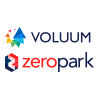Harish Thimmappa, vice president of mobile user acquisition of SupersonicAds, has worked on many acquisition and marketing campaigns throughout his career. Prior to joining SupersonicAds, Thimmappa was vice president of sales at Playnomics, a predictive marketing and targeting platform. He was also the director of app advertising sales for InMobi, where he led performance advertising sales. He shares ways to find success in campaigns in this article.

The mobile monetization market is growing faster than ever! New figures site the growth scaling to $70B by 2017. It’s a good, old-fashioned gold rush, and there’s a fortune to be made. To get the big bucks though, you’re going to need a sophisticated “sifter,” and you’ll need to sift through a lot of sand and rocks to find the gold. How, you may ask? The first step is user acquisition. User acquisition is the single most important step after creating a ‘good app’.
Discovery Campaigns
Discovery has forever been the bugbear of the mobile app ecosystem. In its current state, an app store’s ranking (top free, top paid and top grossing) has a phenomenal impact on whether you have a hit on your hands or a dud.

There are two prevailing processes of user acquisition at the moment: burst and sustained campaigns. You burst when you want to climb up the ranking charts and amass a bunch of users, then switch to sustained campaigns to focus on acquiring ROI positive campaigns. There are several means for the developer to do either, namely: incentivized advertising, banner/interstitial display advertising, video advertising, social media, and traditional means such as billboards, TV, and radio.

Both sustained and burst advertising processes are important to maximize profitable distribution of an app. What is more important is to choose the right strategy at the right life stage of the application. The genre of the app (casual game, core game, lifestyle app, etc.) determines the onset of the stages, and the timing of the launch (holiday season, launched in conjunction with a movie release, back to school period, etc.) will determine the intensity of user acquisition in each of these phases.
App Stages
Broadly, an app (like most other products) goes through three stages: launch, sustain, and sunset.

Launching an App: The most important phase of app distribution is when it is initially made available in the app store. Developers can leverage the novelty of the app, try to get featured by the app stores, and seed the audience to talk about it. They can also employ a burst campaign (a short term, massive push) to push the app into the top of the app store. A smartly executed burst campaign can deliver positive ROI directly by putting the app in front of a large number of audiences, or indirectly, by make the app easy to discover by getting to the top of the charts. Here is a good way to look at it:
Advertising ROI = Sum of LTV of users acquired - Cost of Ads bought + Sum of LTV of organic users derived from the campaign
For this phase, developers should focus on incentivized advertising to drive volume, and support it with display or video advertising. A typical marketing mix could be 70 percent incentivized advertising, 20 percent display, 10 percent video advertising.
Sustaining an App: After the first few weeks or month, you will likely enter a phase when the app has stabilized at a natural position in the app store, the LTV prediction models have increased in accuracy, the game balance is stable. Now you’ll want to maintain this stability and acquire ROI positive users. You now have to focus more on social channels for UA, display/video advertising, and complimented with required volume of Incentivized Advertising. Having invested in user profiling, and predicting the LTV, you should price UA to match value. The key is to remember that there is no such thing as a bad user, every user is valuable - at the right price. Typical Marketing mix could be 20% Incentivized advertising, 30% Display, 50% Video advertising.
Sunset Phase: Though varying greatly, every app enters a stage where profitable UA starts to become difficult, and development muscle moves on to the next app. You can now let the UA be driven by a specific set of rules and channels. Cash flow also becomes very important.

Developers should now focus exclusively on low volume, low price, positive ROI channels. A typical marketing mix here could be: 40 percent social, 40 percent display, 20 percent incentivized ads, 0 percent video.
Ultimately, the genre of the app, the life stage of the app, and the timing of the launch should determine the user acquisition strategies.
Comments









